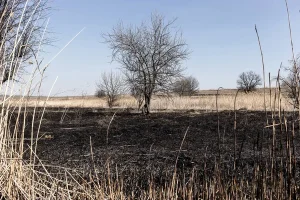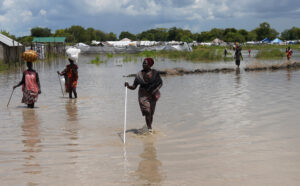Extreme floods are here to stay. Attribution studies show that climate change is responsible for extreme weather events like drought and flood. In fact, the world bank designates South Sudan as a global hotspot of flood risk, with its population ranked as the 7th most exposed to riverine floods. As of October 11, 2022, 909,000 people remain affected by extreme floods in South Sudan. Of this figure, 64% is from only three states_ namely Northern Bahr el Ghazal, Warrap and Unity states. Unity state is the most affected, with floods exceeding the 2021 level. According to South Sudan Flooding Snapshot No.2, the towns of Bentiu and Rubkona are severely hit, with extreme flood breaching dykes and letting water into the UNMIS base, IDP sites and airport. Basically, severe floods in South Sudan have invaded villages, breached dykes and roads, and cut off communities from humanitarian relief.
Yet, our adaptive strategies against extreme floods remain wanting. Recently, a United Nations-funded project revealed that South Sudan’s existing hydrometric system does not provide accurate and timely information for authorities and communities to prepare for flood disasters. For example, of the existing seven hydrometric stations, only five are functional but manually operated, with zero “automatic data transmission mechanisms (telemetry).” Without flood forecasting and early warnings, it is difficult for authorities and communities to plan and prepare for disasters. The implication is that our flood risk management system becomes reactive, with flood only becoming an issue when pictures of villages submerged by water cover the front pages of our newspapers or a state governor implores NGOs for humanitarian relief.
While the foregoing reactive strategy is wanting, it is also limited. In fact, the National Council of Ministers only approved USD 10 million as a humanitarian response to the victims affected by the flood in October 2021. But even then, this hardly made any difference in the lives of the flood victims. According to the UNOCHA report for October 2021, nearly 630,000 population were already affected_ displaced and lacking basic necessities like food and non-food items. Of all those affected, Jonglei and Unity states accounted for 58% of those affected in 2021, with the majority from Jonglei State evacuating themselves to Mangala in Central Equatoria State. Other limitations relate to funding shortfalls for NGOs and security constraints. In addition to the $75,000, the Catholic Pope offered to the victims of the flood in Upper Nile state, victims of the extreme flood could not be resettled to their places of origin_ one example being Mangala IPDS.
While short-term and long-term adaptive options exist, there is little political interest in urgently confronting extreme flood disasters. In 2021, the Ministry of Humanitarian Affairs, and Disaster Management (MHADM) developed legal and institutional frameworks for dealing with risks associated with extreme weather impacts. Within this framework, the Ministry of Water Resources and Irrigation (MWRI) was to act as the lead institution, partially due to its involvement in drafting the 2013 Water Bill. But common problems undermine these efforts. The institutions lack the institutional capacity and financial resources to make a practical impact. In a world where extreme weather events are frequent and induce wide-scale human suffering and economic losses, political support for adaptive measures is a crucial element for effective flood risk management.
But skeptics may argue that the government’s efforts to address extreme floods are also being frustrated by numerous actors_ the public and environmentalists. One example is the government’s decision to dredge the Naam river as a flood adaptive strategy. Although the content and scope of dredging remain contentious, most proponents of dredging agree that the objective of dredging is to remove or open waterways for flood water to leave. These waterways, they explain, have been blocked by a build-up of sediment in the river basin and aquatic weeds which hinder water flow. They believe dredging, that is, deepening, and widening the river banks and clearing aquatic weeds, would limit extreme floods from invading villages and local infrastructures. Of course, President Kiir, due to public pressure, suspended the dredging of River Naam in July pending environmental and social impact assessment. Yet, a critical look at the push to dredge Naam River reveals all that is wrong with our overall adaptive strategy to extreme flood. In fact, questions about the content and scope of dredging could not be answered, including the unintended consequences of dredging. Indeed, the rush to dredge the Naam river as a flood control strategy reinforces the view that our adaptive strategy framework is merely reactive, limited and uncoordinated. Adaptive policies and actions must be guided by science and proper planning if they are to be sustainable.
Confronting the rippling effects of extreme floods requires revitalizing our adaptive strategies. Existing adaptive strategies are wanting, limited and uncoordinated. And since attribution science has proved that extreme weather events, like flooding, are a result of climate change and will be more frequent going forward, more efforts are needed to revitalize existing adaptive strategies against extreme floods in South Sudan. This is critical to reducing the human suffering and economic losses associated with extreme floods.





